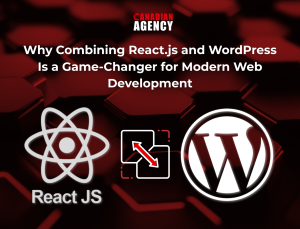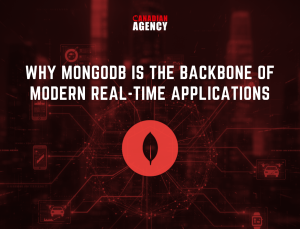The demand for exceptional software development is rising in today’s fast-paced digital world. Whether you’re a startup trying to build your first app or a large enterprise seeking to scale, the challenge remains consistent: delivering high-quality software products within time and budget limitations. This is where software development outsourcing comes into action, offering valuable assistance to companies needing expert help without the added overhead. With various outsourcing models available, choosing the right one can seem complex. However, this guide, a resource designed to help you guide the outsourcing options, is here to assist. Let’s analyze the software development outsourcing models that can improve your project and business!
What is Software Development Outsourcing
Outsourcing software development is a breath of fresh air for companies, relieving them from the burden of establishing internal teams. It involves assigning software development tasks to third-party service providers, allowing you to tap into a global network of skilled developers at lower costs. This method offers several benefits, including faster project completion, access to specialized expertise, and adjusting resources as needed. It simplifies the process and lets you focus on your primary strengths, whether creating a mobile app, building a web platform, or developing a complex enterprise solution.
Types of Software Development Outsourcing Models
Different outsourcing models are all different. You can select from various models based on your project requirements, schedules, and budget. The following are the significant types of outsourcing.
Time & materials model
The Time and Materials (T&M) model is often selected for highly flexible projects. In this approach, clients are billed for the hours invested and the resources utilized during the development phase. This model is most effective when the project scope is partially determined at the outset or when many changes are expected.
Advantages of the Time & Materials Model
- The Time & Materials model is designed to offer flexibility in budgeting by easily accommodating additional features or changes as needed. As your project progresses, you can modify your requirements and scope to suit changing needs and circumstances, making this model ideal for long-term projects, exploratory phases, or when the exact scope of work isn’t fully defined.
- The T&M billing process is completely transparent. You only pay for the actual time and materials, giving you a clear view of the costs involved. This transparency assures you know the resources being utilized and can make informed decisions about the project’s direction.
- This T&M model is designed to offer flexibility in budgeting by easily accommodating additional features or changes as needed.
Best for Long-term projects, exploratory phases, or when the exact scope of work isn’t fully defined.
Staff Augmentation Model
Staff Augmentation is like forming a temporary dream team for your project, giving you full control and oversight. In this model, the outsourcing vendor supplies you with skilled IT professionals who become part of your in-house team. While you control the development process, you gain additional expertise and workforce to fasten the project. It is ideal for companies looking to strengthen their in-house team without committing to long-term hires or those needing specialized skills for a specific project phase.
Advantages of the Staff Augmentation Model
- Productivity: Your team benefits from added skills and knowledge, which boosts their ability to accomplish tasks faster and more effectively.
- Control: You maintain complete project oversight and can direct the work.
- Ability to expand: You can adjust your team size according to the project’s requirements.
It is best for Companies looking to strengthen their in-house team without committing to long-term hires or those needing specialized skills for a specific project phase.
Dedicated Team Model
The Dedicated Team Model involves hiring an external team that operates as an extension of your company. In this model, the service provider forms a dedicated team comprising developers, project managers, and designers who focus solely on your project. While you maintain control and direct communication with the team, the third-party vendor handles HR, payroll, and resource management tasks.
Advantages of the Dedicated Team Model
- The team is entirely committed to your project, resulting in fewer interruptions and quicker delivery.
- Long-term Collaboration: Perfect for extended projects that demand ongoing commitment and engagement.
Best for: Large, ongoing projects where you need a stable and reliable development team for the long haul.
Fixed Price Model
When your project has clearly outlined goals, defined timelines, and a well-documented scope of work, the Fixed-Price Model is an excellent choice. Under this model, the service provider offers a set price for the project based on the agreed-upon scope of work, providing you with budget certainty and predictability. Any changes or deviations from the initial plan result in additional costs. However, this model includes security and predictability regarding budget and timelines.
Advantages of the Fixed Price Model
- When you have budget certainty, you can accurately predict the project’s total cost in advance, providing you with financial clarity and stability.
- You only need to provide the initial requirements, and with minimal involvement on your end, the capable outsourcing team will take care of the rest, making the process hassle-free.
- The process’s predictability provides that timelines and deliverables are firmly established, offering a clear understanding of what to anticipate and when.
Best for Projects with a clearly defined scope, such as small-to-medium-sized applications, MVPs, or standard enterprise solutions.
Delivery team model
The Delivery Team Model is a highly effective outsourcing approach in which the outsourcing partner provides an entire team of developers, project managers, designers, and quality assurance experts. This team works as an independent unit, responsible for delivering the project from start to finish. Unlike the Dedicated Team Model, where the external team becomes an extension of your internal team, the Delivery Team operates with more autonomy, handling the complete software development lifecycle (SDLC).
Advantages of the Delivery Team Model
- End-to-End Ownership: The delivery team takes full responsibility for the project, from initial planning to final implementation, providing a development process.
- Specialized Expertise: You gain access to a fully assembled team of experts with specialized skills tailored to your project needs.
- Reduced Management Burden: Since the outsourcing partner handles team management and execution, your in-house team can focus on strategic goals rather than day-to-day development activities.
- Faster Time-to-Market: With a dedicated team focusing solely on your project, you can achieve more rapid delivery and more efficient use of resources.
This model is best for Companies looking for a solution, particularly when they lack the internal resources to manage a project. It is ideal for complex, large-scale projects requiring multiple roles and expertise for success.
Conclusion
Regarding software development outsourcing, choosing a suitable model is crucial for project success. The model you select should match your project’s complexity, budget, and the level of involvement you desire. If your project changes often, the Time & Materials model provides flexibility. Need extra talent for a specific task? Staff Augmentation is the way to go. For long-term and consistent collaboration, the Dedicated Team model is ideal. If you prefer predictability in cost and time, the Fixed Price model offers a clear roadmap. Remember that you can transition from one model to another as your project progresses.




